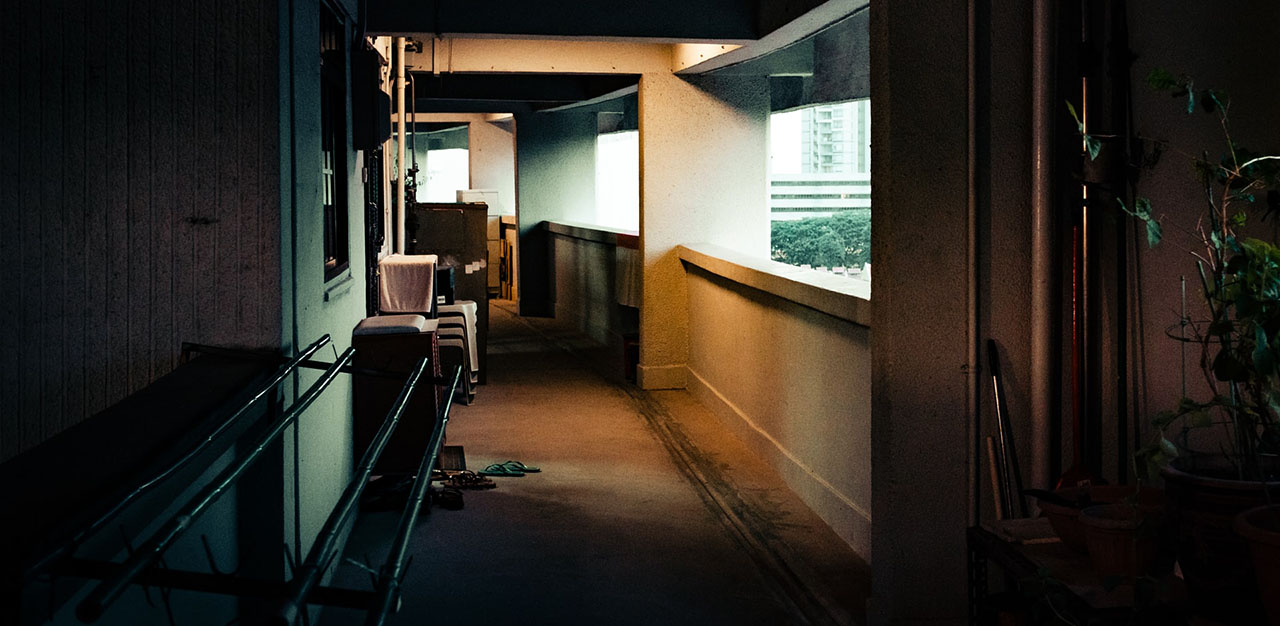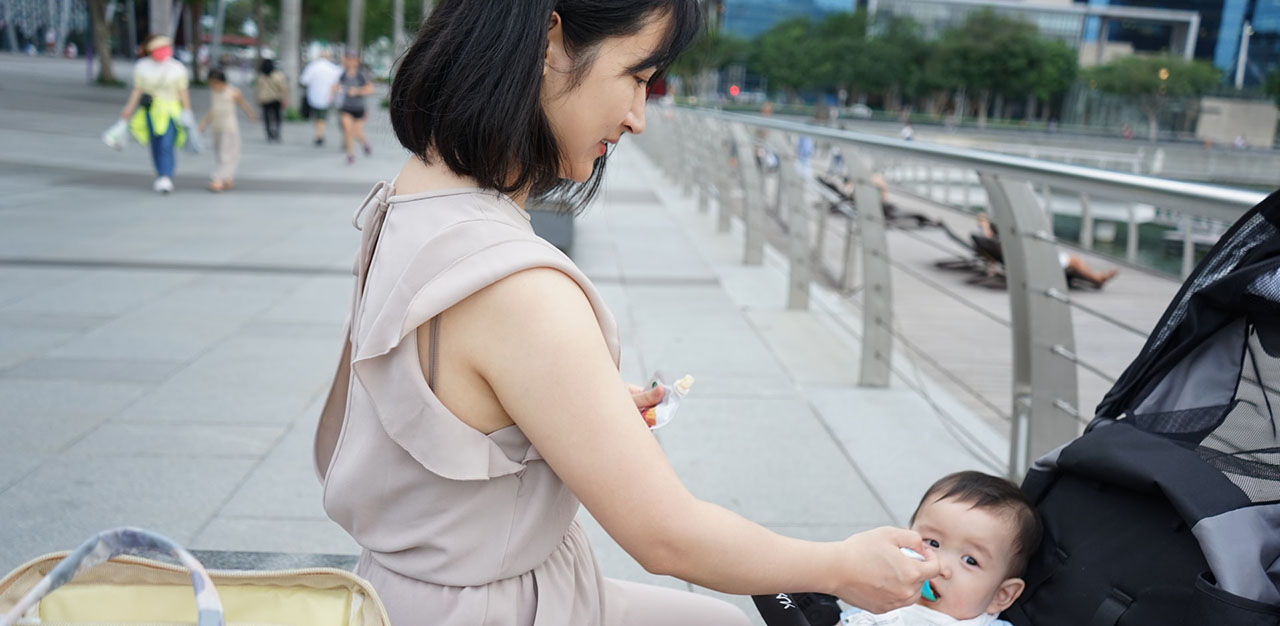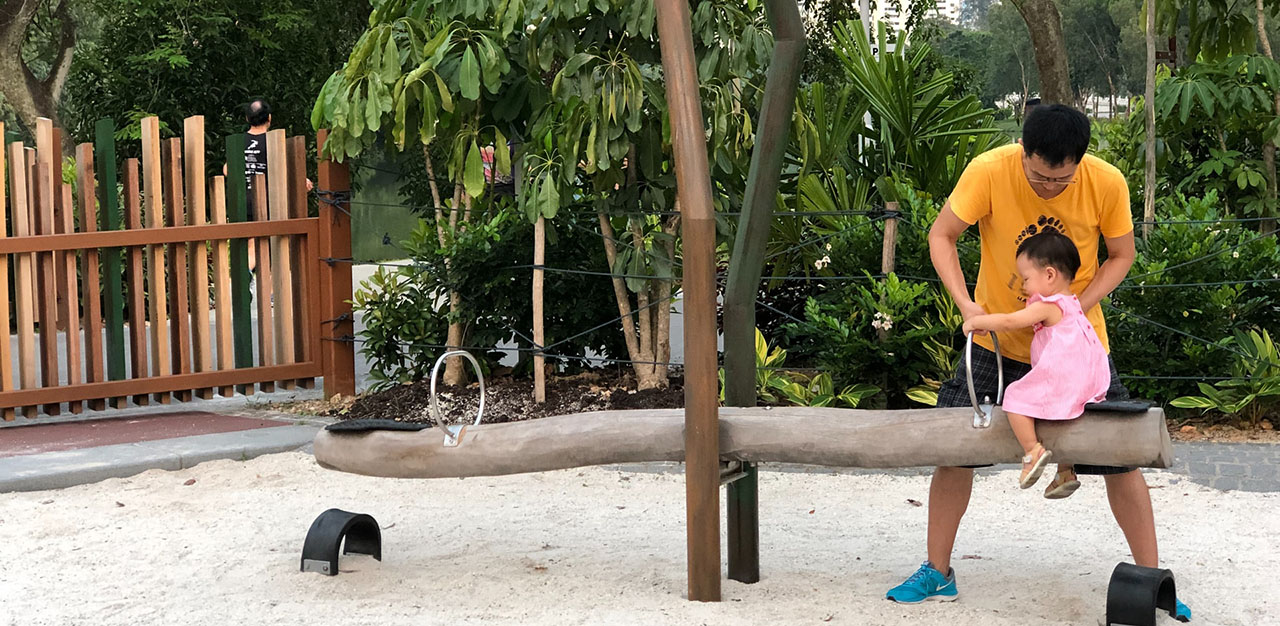In the third and final part of this series reflecting on key turning points in Singapore’s journey towards achieving gender equality, writer Kellynn Wee focuses on how the pandemic has revealed crack lines in crucial issues surrounding the advancement of women’s rights in Singapore. These include work and care responsibilities, domestic violence, and migration. The first part can be found here and the second part here.
It was the heart of the circuit breaker period in Singapore in early 2020. I was taking my dog for a walk for the night when I heard screams coming from my apartment block.
Distressed, I stood at the grass verge, peering up at the towering stack of my building, and tried to figure out where the screams – punctuated by heavy thumps that made me feel ill – were coming from.
My phone buzzed. The WhatsApp chat group that my neighbours had set up – mostly used to collate group orders for lunch or to update each other on lift maintenance schedules – lit up in a fury of text messages:
“Who’s that?”
“So noisy… cannot sleep”
“Which block is it? Anyone know which floor?”
“Should we call the police?”
“Is anyone going to call the police?”
A silence. And then a message:
“Don’t call the police lah. Private matter… let it be.”
And then, thankfully, a firm reply:
“Someone might be getting hurt… I am going to call the police.”
Rates of domestic violence in Singapore shot up during the COVID-19 pandemic. The Singapore government reports that in the first two weeks of the 2020 circuit breaker, Family Violence Specialist Centres saw a 37 per cent increase in calls.
The same report showed that, in April and May 2020, the Singapore Police Force received an average of 485 reports of domestic violence per month – a 25.6 per cent increase from the previous monthly average of reports in February and March.
Being required by law to stay home under stressful financial and emotional conditions might have exacerbated intra-family tensions. On top of that, it is likely to have isolated victims of domestic violence who could otherwise have found reprieve in spaces beyond the closed curtains of home.
While domestic violence affects men as well, its primary victims tend to be the more socially powerless – children, the elderly, domestic workers and women.
Stay-home notice: When the house is not a home
We live our lives expecting to be able to move freely through the world, but the COVID-19 pandemic has shown us that mobility – what we thought was a fundamental fact of life – can no longer be taken for granted, especially in the face of crises.
The pandemic has limited our movement outside of our homes, particularly during the circuit breaker period, and made it almost impossible to travel in or out of Singapore.
The effect of this immobility has had a powerful impact on women.
Home is an ambivalent place. Feminist political theorist Iris Marion Young writes that although it is often pictured as a welcoming space where you can relax, unwind, and feel safe, it has a different meaning for women, who may experience it as a site of confinement and servitude.
For members of society who might be otherwise marginalised – such as LGBTQ+ youth, migrant domestic workers, or the elderly – the home can be a space of terror and loneliness, as well.
AWARE’s (Association of Women for Action and Research) social workers note that there was a “sudden escalation in violence when families were given stay-at-home notices”, suggesting that the pandemic has not only increased incidences of violence, but also worsened degrees of violence.

The risk of regression in our attitudes towards gender roles
Historically, women have been expected to carry out reproductive work: Raise children, care for the elderly and those in need, and cook and clean. Without this invisible labour, society would likely grind to a halt.
Oxfam estimated that if care work was valued in terms of money, it would be worth nearly US$11 trillion a year. An International Labour Organization report showed that the care work gap is particularly egregious in Asia and the Pacific, where women do four times more unpaid care work than men. The same report noted that when waged work and unpaid care work are accounted for together, the working day is on average 45 minutes longer for women than for men.
With the entrance of greater numbers of women into the workforce, they are now often expected to shoulder the responsibility of salaried labour alongside the invisible burden of care.
One of the pandemic’s effects on women has been a further dissolving of the boundaries between work and home. While care responsibilities in normal times could have been split between schools, daycare centres, and relatives, COVID-19 measures mean that these options have shrunk, and women might be more hemmed in by their double shifts than ever.
Women’s employment is also generally more compromised by the pandemic because they tend to be employed on precarious and informal contracts or work in industries such as healthcare, travel, and retail – industries most heavily affected by COVID-19.

A study of the impact of COVID-19 on gender inequality in the labour market, using a representative sample of respondents from the U.S., Germany, and Singapore, put forth a number of interesting findings.
First, it showed that women in the labour market were generally more severely affected than men: they were more likely to work from home, reduce their working hours, or lose their jobs.
Second, women lost their jobs and their partners kept theirs, they tended to maintain more traditional gender-role attitudes – that is, they were more likely to believe that their responsibilities were to the home and the family; that for instance, a working mother had more difficulty in maintaining a warm and secure relationship with their child.
On the other hand, if men lost their jobs and their partners kept theirs, then gender-role attitudes became more egalitarian.
Therefore, if women’s employment is more affected by the pandemic, then there is a possibility that gender-role attitudes might become more regressive overall – despite earlier strides made in terms of gender equality.

We do have to take these findings with a pinch of salt: Singapore Manpower Ministry Josephine Teo said that the female employment rate on the island has remained fairly stable despite the pandemic.
But overall, Singapore’s women are still not on par with men at the workplace, and women are still socially and culturally expected to be primary carers – issues which are acknowledged by the Conversations on Women’s Development.
Whether the pandemic will turn back the clock on gender equality for women or not, in terms of their dual roles as carers and workers, is still uncertain but remains a concern nonetheless.
An intersectional approach matters as well: When we think of working women and care responsibilities, we tend to imagine female white-collar professionals.
For women who work in informal industries, queer women or single mothers, their challenges are even more pronounced.
Clipped wings: migrant women grounded by the pandemic
Migrants in Singapore are treated differentially from citizens. Governments pledged to serve the interests of citizens but are under no obligation to protect and serve the migrants in their midst.
For migrant spouses on Long-Term Visit Passes (LTVPs) – 70 per cent of whom are women, this is no exception.
AWARE’s work on transnational families reveals the extent of migrant spouses’ vulnerability. For example, migrant spouses can apply for an LTVP (valid for one to three years) after they are married to a Singaporean citizen. But, there is no guarantee that the pass will be renewed, and there is little transparency around the eligibility criteria for renewal.

Many migrant spouses live in Singapore on Short-Term Visit Passes (STVPs), which generally last for 30 days and must be periodically renewed by exiting and entering the country.
In the light of the pandemic, such ease of mobility is impossible.
While the Government has granted extensions to all but 2.8 per cent of all STVP applicants, the extensions are short – ranging from one week to three weeks – leaving spouses mired in fear and uncertainty that they might be asked to leave their homes during a global pandemic.
The fragile status of migrant spouses can also mean that they are at greater risk of violence and unemployment during the pandemic. AWARE found that migrant spouses reached out for help about family violence issues at twice the rate of local women. They are also not eligible for the same relief schemes as Singaporeans, face social and cultural barriers to integration, and experience lower chances of employment.
Another group of migrant women in Singapore who has faced particular difficulties during the pandemic is foreign domestic workers.
One of the ways that Singaporean women cope with the dual burden of caring and working is by outsourcing household labour to domestic workers from countries such as the Philippines, Indonesia and Myanmar.
Dr Laura Antona, a geographer from the University of Oxford, recorded conversations with domestic workers in Singapore who expressed their dismay at not being able to return home for leave and employers who refused to let them out on their days off, even after circuit breaker measures had lifted.
As Margielyn, a domestic worker who Dr Antona spoke to, says, “Ma’am thinks I will meet with friends and bring back the virus, so she don’t allow me out.”
Migrant women also discussed their emotional exhaustion from being constantly watched by their employers and the additional load of work they had to undertake to care for family members at home.
Yet for some of the migrant domestic workers that Dr Antona interviewed, the pandemic was not so much different from pre-pandemic life.
Whether or not there was a global pandemic raging, foreign domestic workers were accustomed to being confined, isolated, watched and having to shoulder heavy workloads.

A rising tide lifts all boats
The jury is still out on whether the pandemic is a disappointment or a milestone for the advancement of women’s rights.
Perhaps the experience of struggling to maintain family life without external help will lead us to recognise the tremendous value of care. Or maybe the escalation of rates of domestic violence will unveil the true extent of how homes can serve to conceal and intensify unequal family dynamics. And perhaps there is a chance that we will recognise that the migrants in our midst deserve the same range of protections offered to citizens, especially when they have nowhere else to go.
Ultimately, what the pandemic has done is to reveal fundamental crack lines in how we as a society have decided to deal with structural arrangements of power: Of care work, appropriate gender roles, transnational marriages, and migrant labour.
The onus can, and does, often fall on women.
The year 2021 was declared the Year of Celebrating SG Women. There is much to celebrate: We have come some way from when our policies encouraged a eugenicist approach to reproduction and feminist civil society has significantly matured.
The ongoing question, then, is whether or not our ongoing conversations about women’s development will acknowledge these fundamental crack lines – and whether or not they will include not just some women in Singapore, but all women in Singapore, in their discussions.
Join the conversations on THG’s Facebook and Instagram, and get the latest updates via Telegram.














